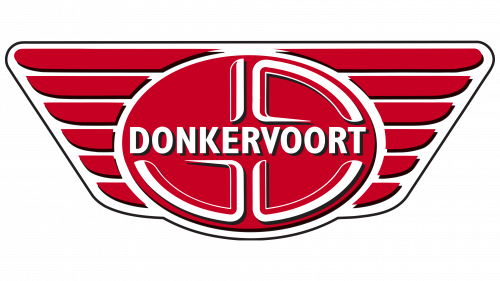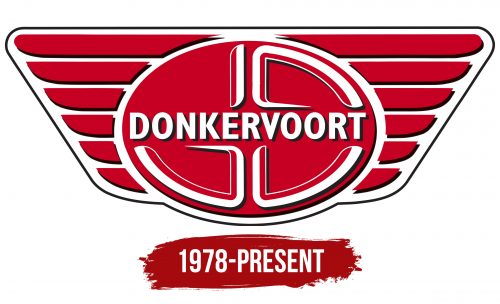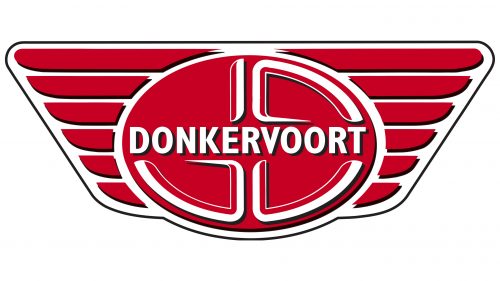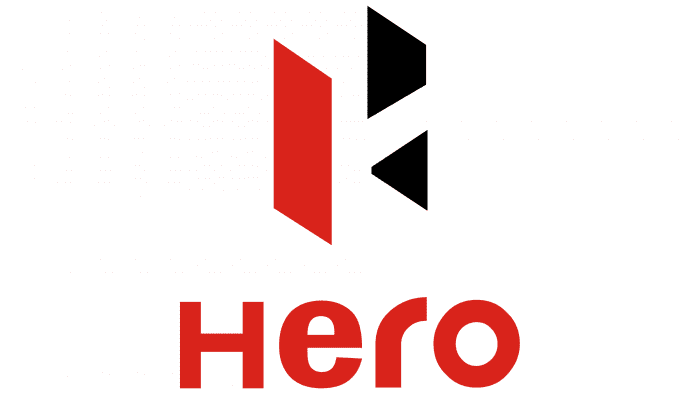The Donkervoort logo is strong and powerful. The emblem shows a leader capable of finishing first and triumphing over competitors. Thanks to the high-performance engines designed by the company, the logo seems to have wings.
Donkervoort: Brand overview
The Donkervoort brand, which emerged in 1978 in Lelystad (Netherlands) and became synonymous with Dutch sports cars, was the brainchild of former race car enthusiast Joop Donkervoort. He began his endeavor by introducing the S7 model in the same year. This lightweight open-top sports car with a Ford engine was produced in limited numbers.
1982, the brand introduced the D8 model, Donkervoort’s first production car. Throughout production until 1990, the D8 was powered by engines from Audi and Volkswagen. With the onset of the 1990s, Donkervoort introduced the D10 model, powered exclusively by Audi engines. Over the decade, this model underwent refinements, resulting in variants such as the D10 Evo.
1999 marked another milestone for Donkervoort with the debut of the D8 GT, powered by Audi’s new turbocharged engine. This model emphasized the brand’s commitment to creating lightweight cars without sacrificing performance. Similarly, in 2005, the D8 270 was introduced with 270 hp thanks to the Audi engine, although only 25 were produced.
In 2006, the brand launched the D8 GTO model. This model, equipped with a powerful 2.5-liter Audi TFSI engine, produces 340 to 380 hp in various configurations.
In 2023, Donkervoort continued its mission to create bespoke sports cars with an artisanal approach, producing around 150 cars annually in the Netherlands. Under the leadership of its visionary founder, Joop Donkervoort, the brand remains true to its core principles: uncompromising quality and a minimalist approach to electronics, guaranteeing drivers a sober and exciting experience on the road.
Meaning and History
What is Donkervoort?
It is a Dutch automaker known for producing lightweight sports cars. Founded by Joop Donkervoort, the company specializes in hand-built cars. Cars such as the D8 GTO are known for their exceptional handling, powerful engines, and distinctive design, often inspired by classic British roadsters such as the Lotus Seven. The brand focuses on providing an exhilarating driving experience by combining cutting-edge engineering with bespoke designs.
1978 – today
The Donkervoort logo has a distinctive white trapezoid with bold horizontal red stripes, reminiscent of a classic car’s grille. This design element reflects a sense of heritage and pays homage to classic car aesthetics.
In the foreground, an oval contains an abstract pattern and the brand name “Donkervoort.” The brand name is in bold white letters with black shadows, creating depth and making the name stand out. This bold font symbolizes strength and precision, qualities associated with Donkervoort vehicles.
The abstract pattern within the oval adds sophistication and uniqueness, suggesting the intricate engineering behind Donkervoort cars. The black shadows around the white letters give the logo a three-dimensional effect, emphasizing the tangible quality and robustness of the vehicles.
The red and white stripes evoke tradition and heritage, while the bold font and abstract patterns suggest modernity and innovation. The three-dimensional effect adds a touch of sophistication, making the logo visually appealing and representative of Donkervoort’s values of strength, quality, and intricate design.
The Donkervoort logo blends classic and contemporary design elements. It captures the brand’s essence, presenting a powerful and memorable image that resonates with car enthusiasts and potential customers.





